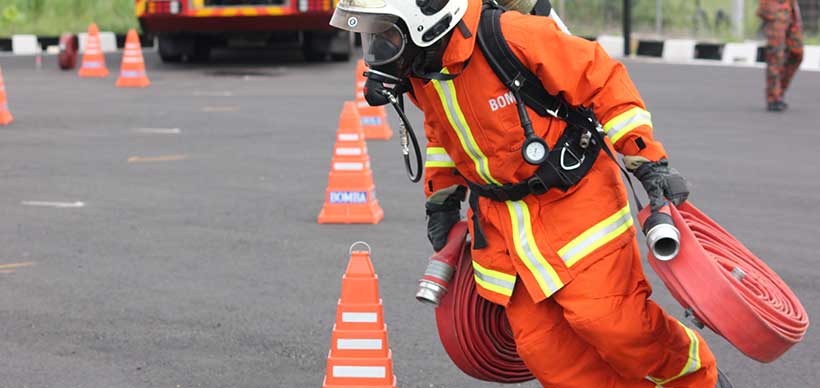Confined Space Safety Tips: What To Do Before, During & After The Job
Confined Space Safety Tips: What To Do Before, During & After The Job
April 11, 2023 |
Within the realm of workplace health and safety, working in confined spaces poses distinctive and particularly grave risks. Regardless of the latest, most expensive, or most impressive equipment, employees will remain vulnerable unless a safety-first culture prevails. Cultivating a safety-first atmosphere demands constant practice and effort. To support this objective, we have developed a practical manual of confined space safety tips that will assist your employees prior to, during, and following a confined space job.
What to Do Before a Confined Space Job
- Establish Safety Plans for Every Confined Space Worksite
A confined space safety plan should encompass an assessment of the workplace layout, surroundings, potential dangers, entrance and exit protocols, proximity to emergency services, and additional pertinent factors. The blueprint should detail job-specific strategies for different safety roles and responsibilities, training and inspection protocols, and warning signs of potential threats. Having comprehensive and proficient safety plans aid in preparing your team to respond to unexpected situations with calmness and efficiency. If you’re ever unsure of your safety plans, it’s important to enlist a professional confined space rescue team for a safety consultation.
- Thoroughly Examine Each Piece of Equipment
Prior to deployment, a meticulous inspection of every piece of equipment in your loadout is crucial. Should any evidence of wear and tear show during the inspection, the item should be promptly withdrawn till it’s fixed or replaced. Establishing a consistent and rigorous inspection routine is essential in guaranteeing that all equipment is serviced or swapped out well before any foreseeable need.
- Assess the Confined Space Worksite and Adapt Accordingly
It’s important to compare the actual confined space worksite to how it was evaluated in the safety plan you created initially. Factors such as bad weather conditions, rush-hour traffic, or unforeseen circumstances can affect your rescue plan. Additionally, it’s essential to conduct air sampling to detect any hazardous gases present before going into the confined space. If you encounter a situation where the site conditions do not align with your safety plan, be sure to adjust and adapt accordingly!
What to Do During a Confined Space Job
- Don’t Stray from Your Safety Plan and Protocols
At times, adhering to the protocols established in your safety plan may feel like it impedes efficient task completion. For instance, checking something 19 times without detecting any issues might prompt you to overlook the need for another check. However, it’s critical to remember that in reality, the 20th check may uncover an unforeseen danger. Therefore, it’s essential to avoid becoming complacent and instead maintain a heightened awareness at all times. Always adhering to the safety plan and the prescribed safety protocols is key!
- Take the Time to Communicate Throughout the Day
Although it feels counterintuitive, investing additional time to stay in clear communication with your crew throughout the day can result in safer and more efficient completion of the confined space job. Being overly fixated on the job at hand can cause you to overlook warning signs of impending hazards as they accrue, preventing prompt intervention and endangering yourself and your colleagues.
- Check Unceasingly for All Expected and Likely Hazards
In confined space operations, it’s crucial for all crew members to unceasingly check for all expected and likely hazards in order to alert those entering in time. Collaboration and multiple perspectives are key, particularly when employees are stationed at different locations and entrusted with distinct responsibilities. Ensuring that those assisting and those entering the confined space regularly monitor potential hazards can help prevent accidents by enabling early intervention.
What to Do After a Confined Space Job
- Examine Each Piece of Equipment Again
Prior to concluding the day’s operations and keeping all the equipment, it’s essential to conduct a final inspection to verify that no gear was damaged in the day’s work, particularly those utilized for fall prevention, arrest, or recovery. Such equipment is most susceptible to damage in emergency situations, and thorough inspection is necessary to ensure operational safety.
- Keep a Record of All Jobs and Incidents
Maintaining internal reports of all confined space jobs and small incidents that happen is an excellent practice to adopt. This report should capture details such as the personnel involved, the nature of any incidents that occurred, and any relevant issues present at the worksite. Analyzing such data can enable the team to identify trends and potential areas for improvement in the operational processes or required training. It is a proactive approach to enhancing safety that can help prevent future incidents from occurring.
- Discuss Any Issues and Possible Improvements
It’s imperative that all crew members who entered or worked in the vicinity of the confined space are given the opportunity to share their observations and raise any concerns they may have. Whether through an official debriefing or an informal discussion, fostering an atmosphere where every team member feels free to express their views can yield valuable insights and improve the overall safety of future operations.
